Missed Antarctica: Photography At The Edge Of The World (Part 1)?
This blog is part of a two-part story. If you missed the first part of the story of the Antarctica expedition, make sure to check it out on my blog!
This is part two of my story about participating in, and leading, a unique photography workshop in Antarctica last February. I ended the story on the evening of the first day in Antarctica, which is where we continue now. Sit back and enjoy, because this one is even longer and more exhilarating!
The Reality Of Traveling In Antarctica
At this stage, we were one full day into the Antarctica photo workshop but it felt as if we had been there for a week – in a good way. This would be the theme during this expedition: days packed to the brim with excursions, epic landscapes to see, and most importantly: an abundance of photography. Each evening, before dinner, we attended the daily briefing by the expedition leader (& team) where we would find out what ‘Plan A’ was for the next day. I write ‘Plan A’ because, from time to time, that would change into ‘Plan B’, ‘Plan C’ or even ‘Plan D’ depending on the weather. Just as I am used to travelling in the Arctic, the weather dictates everything in Antarctica. Every evening we would be talked through what we did that day and where we would (attempt to) go the next day, often complemented by an interesting presentation about Antarctica from the expedition team.
It’s an odd feeling, and perhaps even surreal, to be in such a remote place on the planet and still have the ability to eat a tasty three-course dinner and sleep in a comfortable bed, while admiring epic landscapes and seeing whales & penguins swim by. On the expedition ship, you are in a ‘comfort bubble’ which is in stark contrast with outside, being one of the most unforgiving, and even hostile, environments on Earth. When you are in this bubble, you tend to forget that you are so remote that, for example, there is no easy way out in case of a medical emergency. At one point, the expedition leader told us that in order to evacuate one person they would have to sail back the entire ship to the landing strip on King George Island, in anticipation of a medical evacuation plane (if it can land). Realising this puts things in perspective.

Being in a remote place on a remote continent and still having the opportunity to pick between various meals and drinking a glass of red wine in the evening, it just feels strange.

Not only the expedition team did some talking during the evening briefings, we also presented the participants in the daily photo contest.
The Vast, Moody Landscapes With Enormous Peaks In Antarctica
The next morning would be an early one as we would begin sailing through the Lemaire Channel. The Lemaire Channel is a narrow passage between some of the steepest mountains we would see in Antarctica. Several of the mountains directly along the shoreline are above 800 metres in height, which you look at very close and from sea level. It’s such an impressive passage and one of the most beautiful ones we did on the trip.
After having been spoiled the first morning, everyone was hoping for beautiful light during the crossing of the Lemaire Channel. Instead, we got low-hanging clouds and moody conditions. Over the years, I have learned not to set myself up for disappointment when it comes to photography. I woke up with zero expectations, thinking that we will get what we will get. You can’t control the weather, so it’s best to make the most out of what you get. Once I got onto the deck, I embraced the atmosphere. It had snowed, everything was dead silent and the low clouds made everything feel extremely atmospheric.

A happy man in his happy place. The first passage through the Lemaire Channel was absolutely epic and I enjoyed it a lot as you can tell.
One aspect I struggled with throughout the Antarctica trip was how to create scale showing the immensity of the area. We hadn’t seen many birds up to that point but, fortunately, that morning we spotted the occasional bird flying past the mountains and glacier outlets. I attempted to use them to add an interesting element in my images, and add a sense of scale to my work. It’s moments like these that made me realise I made a smart move buying extra batteries for my cameras as there would almost never be a downtime from shooting – unless you were sleeping.
Walking Inside Of A Documentary
Once we crossed the Lemaire Channel, we headed for our first proper penguin-focused landing: Petermann Island. This island is the home to a big rookery of gentoo penguins, the penguin species we would see most on the Antarctica expedition. After a short zodiac cruise, we found ourselves surrounded by thousands of penguins.
As soon as I got on the shore, it amazed me how indifferent the penguins were. They weren’t frightened nor curious. They weren’t showing any interest at all and didn’t give you a moment’s thought. At one point, two penguins walked up to me and it wasn’t because they were curious about me. No, I was simply in their way. As soon as I moved out of the way, they continued on the same trajectory and went about their day. It was unusual to me. Animals are either nervous, frightened or interested but never have I seen them indifferent. It almost felt as if I was walking through a David Attenborough documentary without disturbing what was happening within it.
Photographing the penguins was a lot of fun but also challenging due to the additional avian flu restrictions. Normally, I would either sit or lie on the ground to photograph these small animals from their eye perspective but that was not allowed (understandably). I did bring a small tripod stool with me but ultimately left it on the ship. My experience during that landing changed my whole planned approach as it proved too difficult to use the stool in the snow – especially with a backpack on.

It was snowing pretty heavily as we approached Petermann Island in our zodiac.

I had such a blast walking around the penguins and the atmosphere was just amazing!
There were just too many great moments during this landing for me to condense it down to a few shots so I added a small gallery too.
After leaving this incredible place behind, we arrived back on the Sylvia Earle. As soon as I got back to my cabin, I stepped out on the balcony. The low-hanging clouds had begun to part and stunning light was making its way through, illuminating the impressive landscapes around us.
The Iceberg Graveyard Full Of Life
Later that evening, our expedition ship sailed to an area called the Iceberg Graveyard to spend the night. It’s aptly named, as the whole bay is filled with icebergs that ran aground and now slowly melt away. It’s as if it were their last resting place. Aside from this being an incredibly scenic place, there was a second reason we were spending the night there. We were also conveniently located near the landing site for the next morning: Port Charcot.
That morning, I woke up early for sunrise but instead I focused a lot on the rafting penguins you would see between the icebergs that surrounded us. The penguins gave us a bit of a clue of what to expect during the landing at Port Charcot: a lot of wildlife in awe-inspiring surroundings. As soon as we made landfall, we were surrounded by gentoo penguins with a bunch of them waddling away on their penguin highways.
After a short hike up on a hillside, unexpectedly, we even got to see fur seals very close up. It’s hard to explain what it felt like to be there but it felt so good. There were different species of penguins, adult penguins feeding their chicks, big fur seals rolling about, and even a sleeping leopard seal on an iceberg. It felt so inspiring, invigorating and fulfilling to be there. Not only would you see the most incredible (indifferent) wildlife but there was this epic backdrop to go with it. And this was only the morning! It was our first stop of the day!
After boarding the Sylvia Earle after the lading, we sailed out of the Iceberg Graveyard and headed North through the Lemaire Channel again. During this second pass, we got much better visibility but at the same time, we were also hit by katabatic winds, which were incredibly brutal and harsh. I didn’t get much out of that second passage in terms of landscape photography but I did get one of my favourite shots of the entire trip. On one of the mountainsides, I spotted a penguin rookery. It was completely surrounded by untouched snow. I used my telephoto lens to really single out the rookery within that huge patch of snow, making it seem as if there’s a strong white vignette around it. However, it’s all natural and I barely even edited the image.
The Bay That Turned Out To Be Photography Paradise
As we proceeded on our journey towards the north, we sailed to Paradise Bay. As we would later find out this location was also aptly named in our view as we easily had the best wildlife experiences in this relatively small area. It already began before we even began the zodiac cruise. Around our ship were numerous rafting penguins. And even better, the water was so still that we could even photograph their reflection as they swam along the ship.
Shortly after, we headed down to the mudroom to board the zodiacs. We first headed closer to the science station that was on the shoreline, called Brown Station. As we made our approach, we quickly spotted two Weddell seals nearby. As if it was orchestrated, one of the seals sat up and made this incredible pose the second we got close enough to take photographs. “Next!” was the first thing I said when we got that shot. I just knew we wouldn’t get a better shot than that. I didn’t even know how much better that afternoon would become…
Leaving the Weddell seals behind us, we ventured further into the bay. As we got closer to the glacier, we quickly identified our next ‘target’: a leopard seal lying on an iceberg. It was pretty incredible. Here you have a leopard seal lying on top of an iceberg that’s completely circumventable so we got many opportunities to capture this apex predator in all its glory.
About 15 minutes later, we moved on to the next mission as we overheard radio chatter pointing out there was a lone Gentoo penguin on top of a small iceberg nearby. So far, we hadn’t really been able to get the iconic shot of a penguin on an iceberg and let’s be fair: how much more Antarctic can a photo get?! Just as expected, we carefully approached the penguin sitting on top of a small iceberg. It was such a great moment. He didn’t care about us being there at all. And eventually, he even jumped into the water and swam along our zodiac. Even though we had seen lots of penguins at that point, it was such a special moment.
At this point, it felt like we were just ticking off boxes on our photography bucket list. What else could we get really? Well, easy! We could get whales, and then more whales and then even more whales! The whole bay felt like it turned into a ‘whale soup’ as the expedition team called it. We had several close encounters with humpback whales swimming underneath the zodiacs. Even as we got back onto the expedition ship, we kept seeing the whales pop up between the icebergs around us. I don’t think I will forget Paradise Bay anytime soon.
Reflections & Sunset
The next morning, we travelled onwards to Borgen Bay, a secluded area surrounded by glaciers. The approach was as impressive as the eventual destination. We were greeted by still water with gorgeous reflections of the mountains around us. And as hoped, dramatic clouds added that extra ‘spice’ to the whole surroundings.
As soon as the ship stopped at our destination, we could hear the thundering sounds of the glacial ice moving all around us. Once we got out on the zodiacs our goal was to find beautiful crystal blue glacial ice. There were so many opportunities for great landscape shots that screamed Antarctica in my view. A bit further on into a neighbouring bay, we also found a lone penguin sitting on top of a small island. Using my telephoto lens, I attempted to compress the scene so the penguin was put against the glacial front. It’s another one of my favourite shots of the entire trip and one of the first I fully processed.
Later that day, we continued onwards to Orne Harbour. Due to the more demanding hike that awaited us, the expedition team split us up into hikers and people who would want to do a longer zodiac cruise. I was on one of the longer zodiac cruises and, even though we missed out on a beautiful hike, we got a few incredible moments with chinstrap penguins and fur seals. Another such moment was a close-up encounter with a leopard seal. It was really thrilling being so close to such a large, wild animal. We were able to approach him so closely that you could hear him breathing. It just blew my mind. But the best that day was yet to come…
We stayed in Orne Harbour and the ship waited for sunset before continuing our journey. The light was just fantastic. Out of all the sunset opportunities we got, this one was by far the most colourful. Some of the mountains surrounding us were veiled in the most dramatic clouds, adding to the overall atmosphere.
This rolling cloud was so gorgeous. I was very happy to have my Canon RF 100-500mm to get this close up.

The morning after, we were again treated to some stunning colours. While we weren’t super close to land, I did like these two icebergs in the distance, combined with the colours.
The Final Landings
Later during the trip, landings & zodiac cruises would become more challenging. Especially the zodiac cruise at Graham Passage, a beautiful area filled with large icebergs, was probably one of the more challenging ones due to the more intense wind and colder temperatures. The swell on the ocean also became bigger, which made it even more tricky to shoot. However, I really enjoyed that zodiac cruise as it required a lot more thinking and working the scene to find compositions. The surroundings were incredible but finding something that worked was trickier than usual.
After that zodiac cruise at Graham Passage, the weather expectedly began taking a turn for the worse with stronger winds and bigger swells. From that point onwards, our planned landings would not be as obvious as they had been up until that point. Throughout the night, we began crossing the Bransfield Strait again to get to a location we had skipped on the first day: Deception Island.
Deception Island, where we landed at Telefon Bay, was a location I had been really looking forward to visiting as a volcano enthusiast. The entire island is essentially a submarine volcano that managed to grow above the surface. After a large eruption, the entire centre of it collapsed, flooding it with ocean water. When you approach it, you sail into the caldera of the volcano where we would also be sheltered from the extreme winds that had been developing outside of the caldera. Not only was I excited because this was the southernmost volcano I had ever visited, I was also excited because it looked so much like Iceland, my home!
From Deception Island, it was a short distance to our next destination: Half Moon Island. While the surrounding landscapes were stunning, as we had grown to expect, the real star of the show was the wildlife. The island was the home to a large flock of chinstrap penguins, and while they were a lot of fun to photograph, something else was happening on the northern end of the island which was grabbing the attention of our group. Amongst the dozens of fur seals lay a huge female elephant seal. That afternoon was incredible. Again this combination of jaw-dropping landscapes with many different species of wildlife captivated me. So often during this trip I felt as if I was walking inside of an episode of BBC’s Frozen Planet or Planet Earth.
The Unplanned Drake Passage
The landing at Half Moon Island was a definite highlight of the trip and it’s good that it was because after that landings and zodiac cruises became impossible due to the weather. With very strong westerly winds, we had to jump from one inlet to another on the South Shetland Islands to be shielded from it.
The next day, we arrived back with the expedition ship at the Bellingshausen Station but it wasn’t clear whether we were going to be leaving Antarctica just yet. The same problem that prevented us from landing in Antarctica, was now going to prevent us from taking off. The morning of our planned departure we had a briefing. The message communicated to us during that briefing was very clear: we weren’t going to fly that day, or the next day, or the day after that. There might be a chance to fly after that but the window was really small so there was only one solution: sailing back over the Drake Passage. For those who aren’t aware: the Drake Passage is one of the roughest stretches of ocean on the planet. For many, it’s a deal breaker to visit Antarctica even though it’s a small price to pay for the grandness that follows.
This wasn’t exactly what everyone was expecting. Originally this photo expedition was going to be a fly-in/fly-out situation to avoid the Drake Passage. But it could be far worse… We could have been the people who were waiting to get to Antarctica. They were stuck in Punta Arenas for three days and now also had to add another three days of crossing the Drake Passage aside from flying in.
We were pretty lucky: the crossing of the Drake wasn’t too terrible aside from the first day, when we had the roughest seas. According to the crew, it was the smoothest crossing they had that season (a Drake Lake as opposite to the Drake Shake). It took us just under three days to get back to South America from Antarctica, where we anchored at Puerto Williams – the southernmost settlement in the world. From there, we had to take another, fairly short, flight to Punta Arenas where this wild adventure ended. After an unexpected three day journey, we finally made it.
Image credit: David Waronoff.
The amazing group of people that hosted this photography workshop. Left to right: Mads Peter Iversen, James Popsys, Dani Connor, Nigel Danson, myself, Rachel Bigsby, Adam Gibbs & Rick Bebbington.
Conclusion: Part Two
Those who were on this Antarctica workshop will have noticed that I skipped a few moments and locations here and there in this blog. Truth be told, I could have written an endless amount of pages about this expedition and the experience I had. There were many more epic moments than I could possibly mention here – as shown by the abundant use of superlatives in my blog. It’s a place you have to see for yourself to believe it’s real. To see, smell, and feel Antarctica, all of that combined was an experience that really poured oil onto the fire that is my drive to explore and photograph.
And, if this is how my photographic 2024 will continue… Bring it on!

Join Us On The Antarctica 2026 Photo Workshop
Are you interested in joining the 2026 Antarctica Photo Workshop? It’s now possible to sign up and join us on an epic photography adventure!
Discover Jeroen’s Photo Workshops in Iceland, Greenland & Beyond
Ready to take your photography to the next level? Join me, Jeroen Van Nieuwenhove, on unforgettable photo workshops in Iceland, Greenland, Antarctica and other exciting destinations. Whether your passion is wildlife photography, bird photography, landscape adventures, or mastering drone photography, each workshop is designed to give you hands-on guidance in some of the world’s most spectacular locations.
From puffins in the midnight sun to Arctic foxes in the wild, from glaciers and volcanoes to dramatic coastlines seen by drone – these journeys are more than workshops; they’re once-in-a-lifetime experiences. Group sizes are kept small, ensuring personal mentoring and plenty of shooting opportunities.
Looking for something specific? Check out Jeroen’s…
- Wildlife & Bird Photography Workshops (Puffins, Arctic Foxes)
- Drone Photography Workshops
- Photo Workshops in Iceland
- Photo Workshops in Greenland
Spots are limited – secure your place today!
What Previous Participants Shared About Their Experience
These reviews are verifiable on Jeroen’s public Google Business profile.
Support Jeroen’s Work
As an independent photographer, Jeroen partially relies on your support to keep producing worthwhile content such as blogs, photographs, books and much more. If you want to support his work, it is possible to do so by buying his e-books & books, prints or calendars.
You can also sign up to the newsletter to stay up to date on new blog posts, projects, workshops and other interesting information.
Thank you for considering!










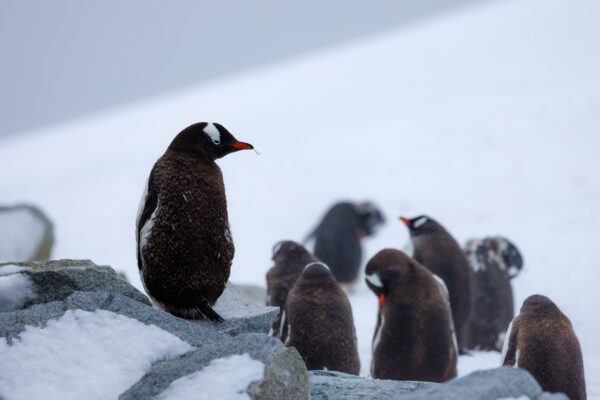


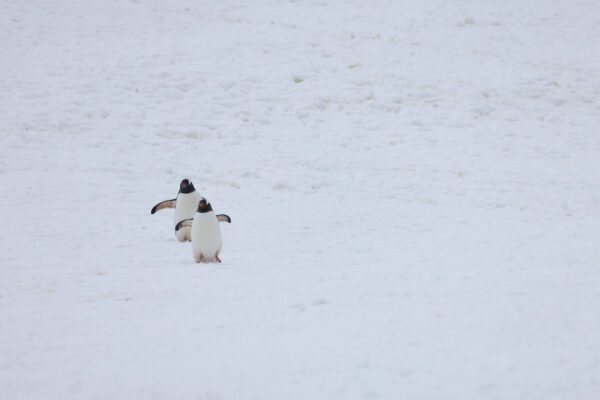











































































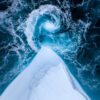



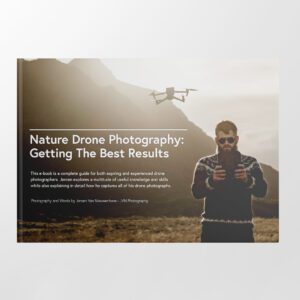

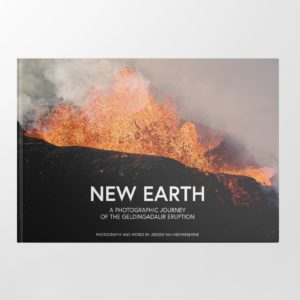
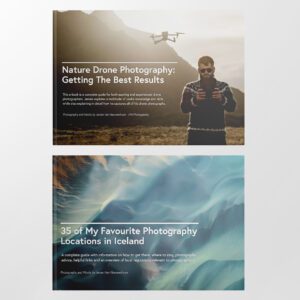



Thoroughly enjoyed reading this and in utter awe of your photos! I can’t wait to experience this for myself!
Thanks Arshad! I look forward to seeing you there!
Joeren,
Thanks for this. A most engaging documentary in itself, and awesome photographs.
Thanks Andrew!